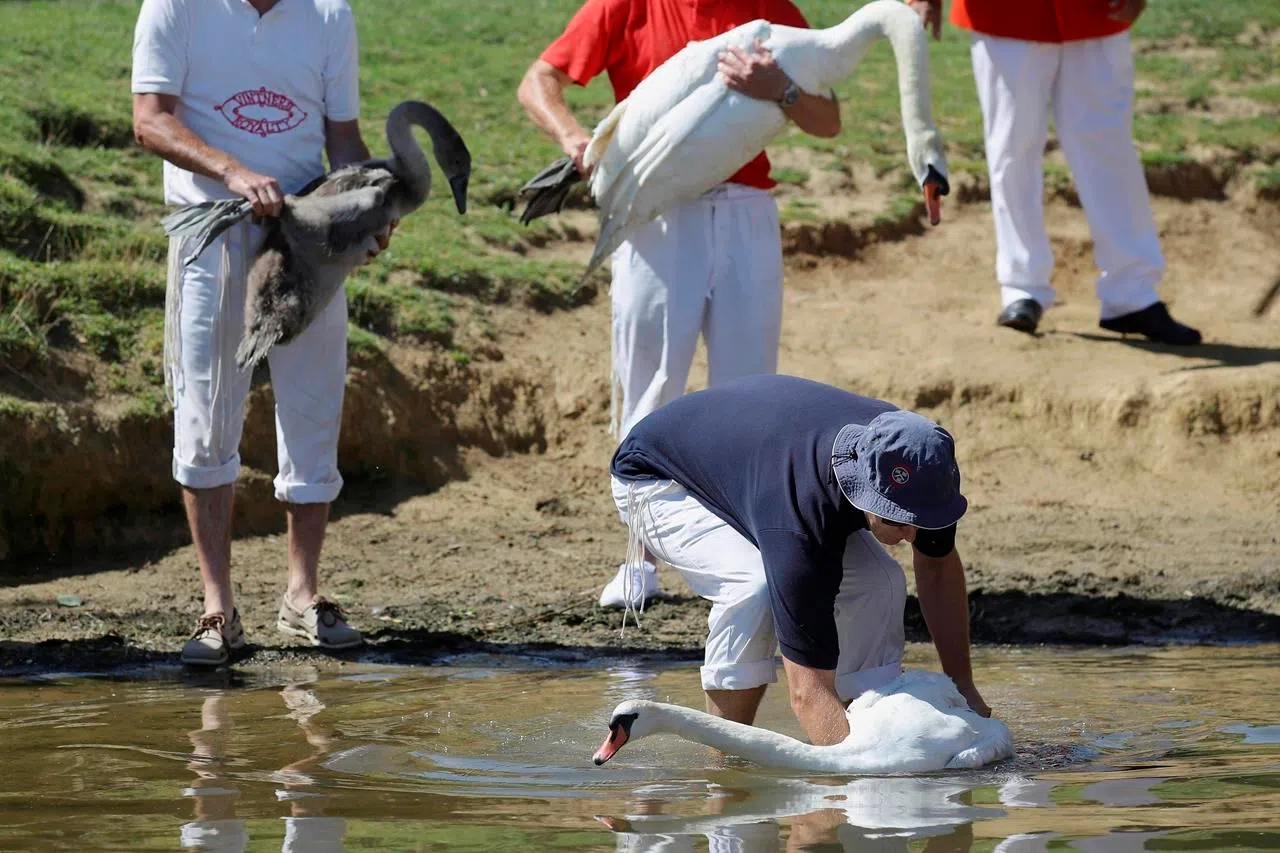
Royal tradition: Counting the swans on the River Thames
LONDON — The annual count of swans belonging to Queen Elizabeth II has begun on the River Thames.
The five-day event known as Swan Upping dates back to the 12th century and began as a ritual to ensure there were enough swans for feasting. Now it is more about conservation. Data from the census is collected to assess the growth of the swan population.
The British monarch traditionally claims ownership of all unmarked Mute Swans in open water. Mute Swans are a species of orange-billed swan.
Swan Uppers — a team of dedicated boaters — are tasked with finding swans on a specific stretch of the River Thames. When a group of cygnets is spotted, they cry “All Up,” then mark the young birds and check them for disease or injury.


